IMO Prize Lecture
We sometimes forget that the beating heart of WMO is its people and that without them, there would be no data, never mind systems, sharing, collaboration, services, research nor innovation.
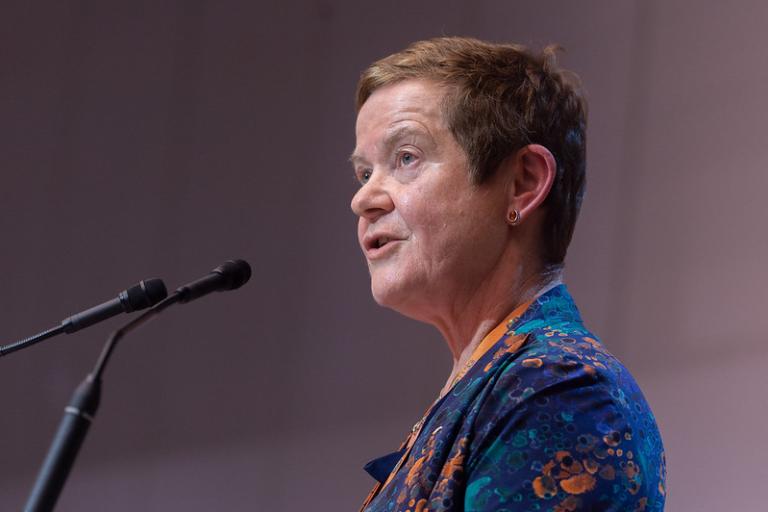
By Sue Barrell
We often talk of data as being the lifeblood of WMO. Indeed, data has been central to WMO and before it to IMO, from the very start. As WMO has expanded the Earth systems concept and embraced the digital era, data-related issues have escalated in importance. However, we sometimes forget that the beating heart of WMO is its people and that without them, there would be no data, never mind systems, sharing, collaboration, services, research nor innovation.
Many remarkable people have had a role in establishing and advancing the goals of international meteorology, from the earliest days of IMO through to today with the truly global institution that is WMO. But my focus is on people as the raison d’être of WMO now and into the future – on people as the enablers to deliver on the WMO vision: the goals of international meteorology.
We, the people that form the global WMO community, know that people are impacted in many ways by weather, water, climate, cryosphere and other hazardous events. We recognize that the extent of these impacts varies depends on many factors, especially location and circumstances – as a rule, the people who suffer the worst impacts are the most vulnerable and exposed. Thus, people entrust the WMO community to monitor, research, understand and predict the state of the Earth system and to deliver much needed data, information and services to assist and guide them when hazards threaten. As we prepare for and navigate the impacts and socioeconomic consequences of extreme weather, climate, water and other environmental events, the WMO vision speaks to the resilience and sustainable development of all nations, especially the most vulnerable.
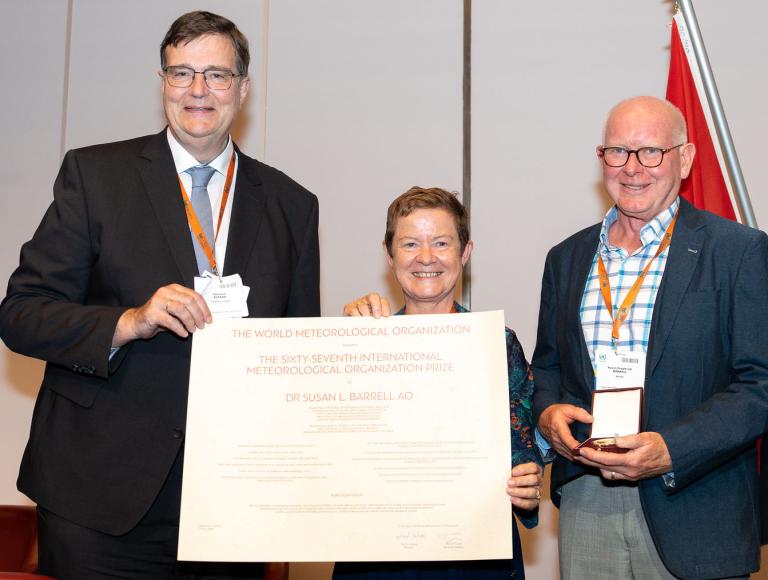
On 23 March 2022, World Meteorological Day, the focus on people became more explicit as the United Nations Secretary-General Antonio Guterres announced an aspiration to ensure every person on Earth is protected by early warning systems within five years and invited WMO to lead that initiative. The UN High Commissioner for Refugees (UNHCR) spoke in 2022 of the clear and growing link between climate change and displacement, citing that since January 2021 more than one million people had been displaced from Somalia due to conflict and drought. Refugees and displaced people have an enormous stake in ensuring that bold climate action is taken, but they are often forgotten in this discussion. The High Commissioner emphasized the critical need for the global community to work together to address this challenge.
The WMO community has taken up the UN Secretary General’s challenge in close collaboration with fellow UN agencies. With our colleagues in the Intergovernmental Oceanographic Commission of UNESCO and the UN Environment Programme, we bring a truly global voice to the challenge of monitoring, understanding and informing on the state of the Earth system. With the UN Office Disaster Risk Reduction (UNDRRR), we work to co-design early warning services to meet the needs of the most vulnerable people. We inform global mechanisms, such as the Intergovernmental Panel on Climate Change (IPCC) and UN Framework Convention on Climate Change (UNFCCC), with the aim of stimulating genuine commitments and actions to understand, reduce, mitigate and adapt to the changing climate to the benefit of people everywhere. International initiatives such as Global Climate Observing System (GCOS), the Global Atmosphere Watch (GAW), the World Climate Research Programme (WCRP), the World Weather Research Programme (WWRP) and the evolving Global Greenhouse Gas Watch all play important roles in this work. And it is on the underpinning basic systems and services of the continuously evolving World Weather Watch, overseen strategically by WMO and delivered by its Members through their people, that all of these rely.
Connecting the dots across global programmes, to a national level and down to the people that need to be informed, alerted, warned, mobilized and kept safe is a challenge. People are not at the end of the line, they are at its centre.

The extensive community
WMO must focus more than ever on its extensive community of people:
- The staff directly engaged by WMO – from its leadership team to those who support its day-to-day operation and programme delivery
- The elected office holders – Executive Council and constituent bodies
- The experts that lead and contribute to the work of the technical commissions, research programmes and regionally coordinated activities
- The Permanent Representatives who, together through the World Meteorological Congress, decide the strategic priorities of the Organization and the regulations that Members will follow
- Partners – fellow UN agencies and aid organizations, regional alliances, space agencies and international research programmes, the private sector, philanthropic organizations and many more – together, we provide an integrated and cohesive response to global weather, water and climate challenges
- Most importantly, WMO Members themselves – their National Meteorological and Hydrological Services (NMHSs) and other national institutions, their executives and staff who operate the infrastructure, collect and share data, and design and deliver information and services to the end user communities that they serve
- And, not least, the volunteers who help gather the data we depend on.
That’s a big community and a lot of people. But the global, regional, national and local user communities for WMO services and data are much bigger and just as diverse. They include national and local policymakers who formulate legal frameworks and allocate resources to build, support and enable their communities to be resilient and organized in responding to extreme weather and the impacts of climate change. They encompass the emergency service organizations that help communities to plan, prepare for and respond to extreme events. Service organizations and businesses also plan routine and strategic operations based on WMO information. And let us not forget that we also serve the research community that delivers the future science and models that will, in turn, help WMO to serve future communities better.
On one side there is the machinery and people of the WMO community working together to develop and deliver data, information and knowledge and on the other there are the people that use those resources to thrive and, in too many cases, to survive. Evolving science, data and technology is now changing that dynamic. Model-based automation and new tools, such as Artificial Intelligence (AI), are enabling rapid generation of value-added products, while also creating demand for new skills and changing the roles of agency professionals. In reality, today, there are no sides – there is a continuum of people seeking to harvest the benefits that science, technology and innovation will continue to deliver. Across this continuum, the needs of people need to be at the centre.
To do that, we need to better appreciate the role of people within our integrated Earth system. If we do it right, we will build better bridges across and between the full suite of communities and peoples, we will be better informed, smarter, more inclusive and productive, and we will deliver better and more effective outcomes all around.
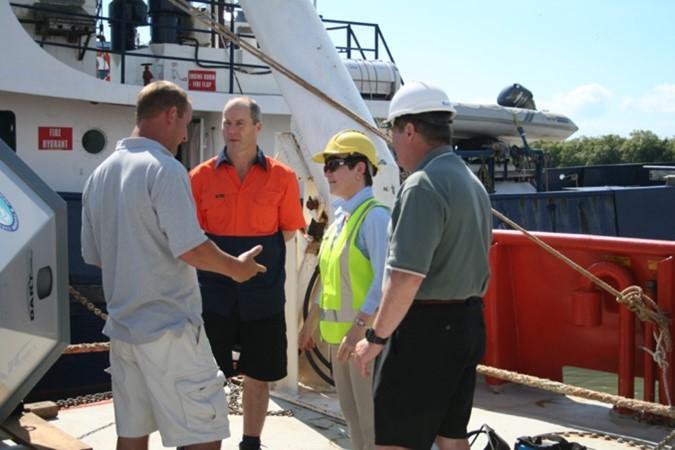
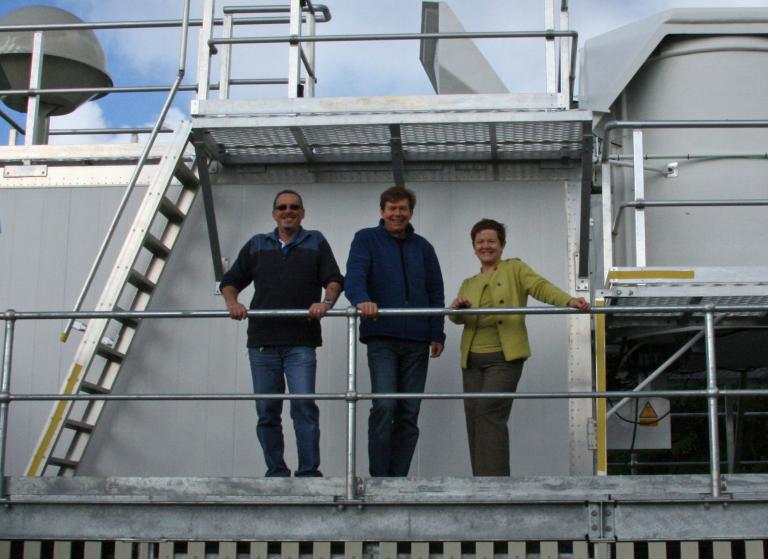
Representation, trust and capability
The call for Equity, Diversity and Inclusion is most often linked to engaging more women, having better cultural, racial, age and regional participation, and including those with disabilities within our workforce, but it is not about fairness: it is about empowering and releasing the potential of those less represented groups to create more equitable societies. Equity, diversity and inclusion, implemented effectively, will deliver genuine benefits to organizations and society, through equality of participation and opportunity and enhanced productivity.
However, ensuring a more integrated people-centred approach, across our workforce and in the delivery of services, requires that we also look through the lenses of representation, trust and capability.
Representation: Most government agencies are required to monitor the accuracy of their information and products, but how well do they measure its effectiveness? Do they know if the information they provide meets the decision-making needs of their end users? What part of the information, if any, is used? Can the user interpret the information and understand what the message is intended to convey?
Ensuring that the information is well-tuned to the needs of end users comes down to how well the people in agencies, especially NMHSs, connect with the people who use the information. This is a challenge given the diversity of communities, the various means for users to access information and the many applications and decisions in which the information are used. Bridging the gap to build a continuum between provider and user is considerably easier when both speak the same language, both literally and metaphorically. The people in NMHSs need to be truly representative of the people they serve – spanning cultural, language, indigenous, ability, geographic and other differences.
Government agencies can best serve their community when they look like them, talk like them, and actively work with them to understand their needs, and to plan and co-design services and service delivery systems. When that level of connection is achieved – between the people in the agency and the people that use the information – improving effectiveness, and measuring it, will be easier and more meaningful.
Trust: People are more likely to seek, apply and act on information from a trusted source. Trust depends on many things, but chiefly on our ability to listen to users then to reliably deliver usable and useful information that genuinely reflects those needs. Trust flows from having a good representation of the community within the agency and depends on maintaining strong connections between the community and the agencies that serve them. The service provider builds trust by respecting the user enough to be open and transparent when uncertainty is uncomfortably high and by owning up when they don’t get it right. Trust built in fair weather is especially important when extreme events threaten. An early warning is only effective if trusted enough to trigger the appropriate response.
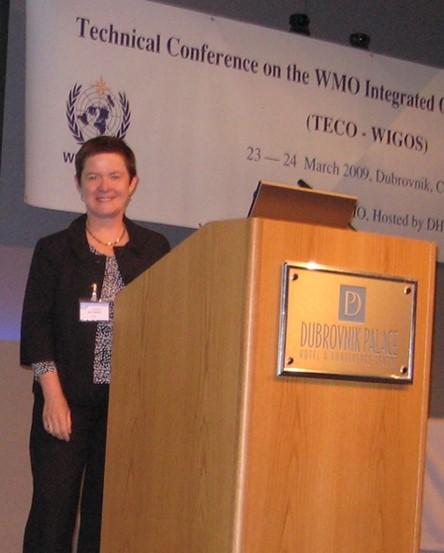
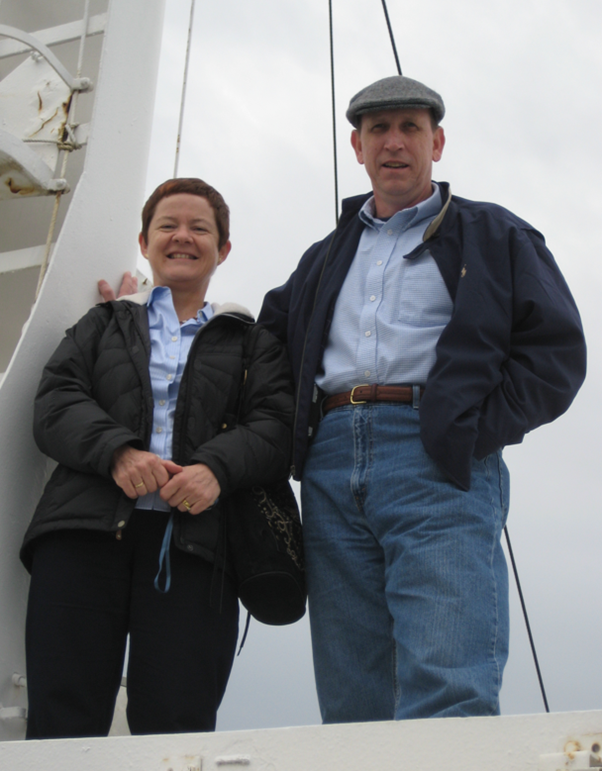
Capability: People, especially those in the various diversity groups, have encountered and overcome many disparate challenges, learnt to think and approach problems in creative ways, and accumulated a wide range of life experiences. It makes sense to capitalize on all the capability that is potentially available by actively seeking out and using all the available talent and diverse skills, experiences and perspectives. There is considerable evidence that diverse teams perform better and make better decisions, so all providers of goods and services should take advantage of the natural diversity represented in a national population.
There is more that we can do, both within the WMO Secretariat and Members’ home institutions to apply the principles of equity, diversity and inclusion with greater impact by looking through the lenses of representation, trust and capability. This is something we all need to act on, individually and together.
“Women hold up half the sky” proclaimed Mao Zedong to emphasize the essential need for women in all professional fields.
Gender equality is only part of the challenge we face, but it is an important one. In his address ahead of International Women’s Day earlier this year, UN Secretary-General Guterres cautioned that at the current rate of change, the increasingly distant goal of gender equality would take another three centuries to achieve. He called for “collective action” worldwide by governments, civil society and the private sector to provide gender-responsive education, improve skills training and invest more in “bridging the digital gender divide”. He drew particular attention to the huge gender gap in science and technology. It is instructive that it took 47 years for the first woman to be awarded the IMO Prize: Joanne Simpson in 2002. The pace has picked up a little, but 20 years later, I am only the fourth woman to receive the Prize.
How can we in WMO be the change we need, and be an exemplar to the UN and Members’ agencies? How can we increase the equity, diversity and inclusion of all our people, to better represent and build trust with our user communities, and utilize all the capability available to us – and through that build our ability to genuinely place people at the centre of our integrated Earth system?
Start at home
My challenge to the WMO community, especially to Permanent Representatives, agency heads, leaders and all those who influence policy and practice in our institutions, is several-fold. This is a case where the solution starts at home. It will not happen without your leadership, but it is not hard.
Firstly, you need to make a genuine commitment to growing the diversity of your own national agencies, both for enhanced productivity and national benefit, and for global benefit through WMO. The benefits will flow in many directions: better representation of the diversity across your population will translate into more accessible and better service outcomes for all, will increase team effectiveness and productivity, will improve the age spread across the organization, which will support succession planning for key roles, and will boost the trust and credibility of the community at large in the services provided.
There are simple ways to do this:
- Work harder to keep the diversity you already have by improving family leave, part-time or flexible working provisions for ALL staff, not just women. Normalizing such provisions for all staff assures that all are treated equally, respected for their choices and are more likely to remain in the organization and seek new roles and promotion – all staff will also be visible exemplars for prospective employees.
- Treated well, your staff are your best advocates, especially when they look like the communities they serve. You can harness this advocacy through a STEM (science, technology, engineering and mathematics) ambassador program. Encourage all staff and across all STEM disciplines to go out and about and talk about their work: visit schools and community groups as well as indigenous, language or cultural gatherings, both in cities and rural areas. Demonstrate that diversity and inclusion is normal practice in your workplaces. Spread the word, encourage students of all ages and genders to study STEM subjects and to aspire to work in your agencies. Equip your ambassadors with simple props, and information about research, data and services. But getting staff to talk about their work – as meteorologists, hydrologists, IT specialists, engineers, researchers, climatologists, glaciologists and more – will be most impactful. As the saying goes, if you can’t see it, you can’t be it!
- Review your recruitment and promotion processes for all roles, not just STEM roles, to make sure that equity and diversity is reflected in all aspects – including in the description of the position and the selection panel. Actively promote the work you do and the skills you need in areas and among groups not well represented in your workforce. Advertise vacancies or trainee intakes through media that are accessible in those communities. Engage representative staff in outreach.
- Engage with staff from various diversity groups to understand what successful inclusion looks and feels like and shape your actions accordingly.
- Review your work practices and training programs, especially for technical roles, to remove implicit barriers or subconscious bias that might discourage a more diverse range of applicants.
- Mentoring and informal network building are easy, cost-effective tools for building confidence and engagement and encouraging retention and development. If you are unable to establish your own mentoring program, align with a national initiative, such as through a learned academy or other STEM institutions, or seek advice from the WMO Secretariat team.
- Encourage staff to participate in WMO mentoring, networking and allyship programmes, bringing together experienced experts with younger or newer staff to share experiences and encourage growth, and to contribute to succession planning on expert teams and within your organization.
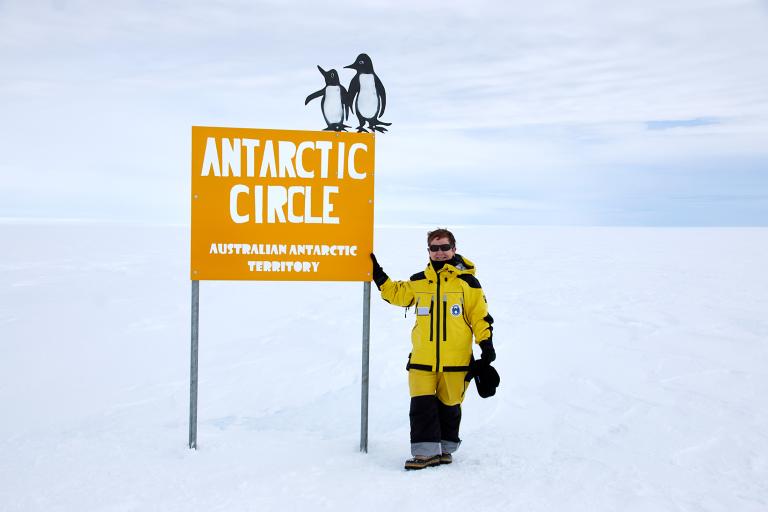
Secondly, be more proactive in nominating experts to participate in expert teams and working groups at the regional level and via the WMO expert database. This delivers benefits on several fronts and returns value back to your own service, through the personal development of individuals, through translation of new techniques, ideas, systems and data between your agency and WMO (both ways), and through the networks that your experts build and the connections they make. The current shortfall of diverse experts in the database brings into question the processes at work in Member agencies: is it that women and minority groups are not represented in the agencies or that they are passed over for nomination to a WMO expert role?
Specific action is needed to change this situation:
- Apply the principles of equity and diversity, and quotas where they exist, in selecting experts to nominate to the WMO expert database with the aim of being inclusive and representative of all diversity groups.
- Nominate more rather than less, this is especially important in regions with a higher proportion of developing and least developed countries – they may not all be called upon, but technical commissions and others will be able to select experts from a wider array that reflects both the diversity of our community and the many areas of expertise.
- Call for experts from beyond the NMHS, when key expertise lies elsewhere – reach out to ocean, ice, water, climate, space and other agencies as well as academia for nominations. Doing so will also build better networks and connections at a national level.
- Seek feedback from technical commissions and chairs/coordinators on the contributions made by your experts. Encourage those with high potential to continue their commitment, to evolve into future expert team chairs and into leadership roles.
Thirdly, the WMO governance system provides a great exemplar of international cooperation. We, as leaders in the WMO community, need to make a point of including younger and diverse people in delegations to Congress, Executive Council and constituent body sessions. These are the future leaders of our community. Participation in such sessions provides opportunities for professional development and networking, and the creation of lifelong alliances as well as exposing them to the governance processes that are the backbone of WMO.
Fourth, the WMO Unified Data Policy is an excellent vehicle for growing awareness and collaboration across relevant national agencies, academic institutions and the private sector. The Policy’s primary aim is to improve access to integrated Earth system observation data as a basis for more comprehensive service offerings. But it is also a means for growing collaboration and networks, increasing the pool of experts and mentors, and providing more career pathways exemplars for the next generation of STEM professionals. It could also encourage interchange and development of staff, increase career opportunities and enhance diversity in many ways.

The Secretariat and experts
The WMO Secretariat, as an employer and through the work of its technical and expert bodies, also needs to be more proactive. The updated Gender Action Plan provides a well-developed rationale for why gender action is important, and a rich suite of actions that will make a difference. But the actions must be backed by a real commitment of both human and financial resources via the core budget. Gender equity is not a numbers game; the benefits of equity and diversity will not be delivered without genuine inclusion and respect.
WMO staff and experts travel the globe, physically and virtually, in the course of their work. They engage with colleagues from all WMO Members and across the UN system, and in many different fields of expertise. They are well-placed to be ambassadors for WMO and its mission, to connect people within the WMO and partner communities as well as across the science to service continuum, and to keep people at the centre of everything we do.
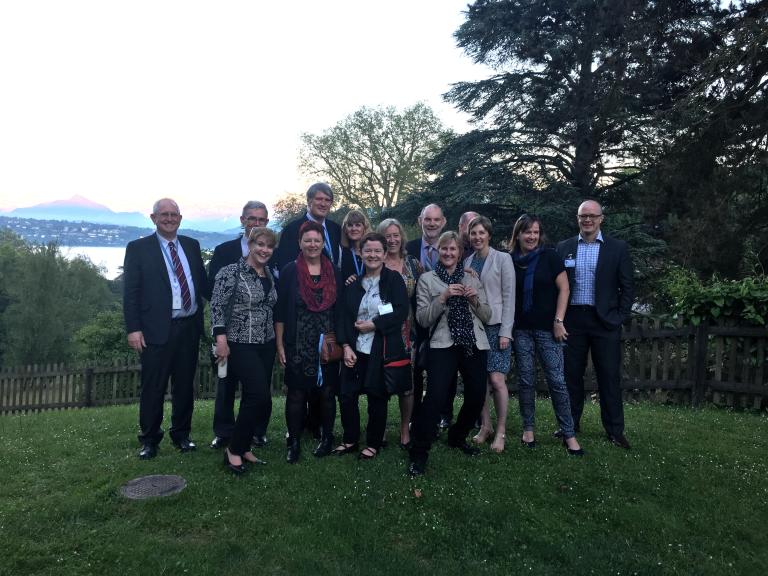
The technical commissions and research board, as well as regional working group coordinators, rely on experts nominated by Members to populate their teams and deliver on their critical work plans. The actions outlined above will increase the skilled and available pool of people that they can draw on. The onus is still on them, however, to select the experts and construct effective and inclusive teams. Mentoring by more experienced experts will aid with the assimilation of new, more diverse experts and expertise in teams and enhance team participation, bringing in new ideas and approaches. Importantly, this will also assist in succession planning by identifying and mentoring potential new chairs to ensure a more structured turnover in leadership. Similarly, Early Career Researchers new to WMO research programmes would also benefit from mentoring from those who are more experienced. Early Career Researchers are often eager to contribute and full of energy and are not yet weighed down by competing demands for their time and expertise.
Greater diversity and more balanced regional representation in technical commission teams will help build the bridges with Regional Associations. It will further assist in making the continuum a reality, through bridging the gap from WMO to Members and their people, to the people that depend on the information and services they deliver.
Early Warnings for All
In closing, I return to the challenge WMO has been set by UN Secretary-General Guterres. The goal of Early Warnings for All reflects the value placed on the life of every person on Earth. It recognizes the increasing threats we all face, especially the most vulnerable, not just from extreme weather events but from their escalation in the face of unmitigated climate change.
More than a year has lapsed towards the five-year horizon set by the UN Secretary-General. It is timely to reflect on how well the continuum of people is represented and connected across the whole integrated Earth system value cycle, from providers to the intended beneficiaries. The challenge starts at home, so it is especially timely for Members, through their Permanent Representatives, to accelerate efforts to create the diverse and inclusive workforce needed now and into the future to better serve our shared mission, and to ensure that the information shared with users genuinely reflects their needs. It is about making the best use of the resources and capability we share to deliver the best outcomes for all. And it’s about making sure we are indeed holding up the whole sky.
A note of thanks
I would like to take this opportunity to thank and recognize many people: I have had the support of many friends in Geneva and among experts and collaborators worldwide over my 20 years of participation in WMO; my friends, mentors, colleagues and successive Chief Executives at the Bureau of Meteorology have valued and encouraged my sustained engagement in WMO; and most importantly my family, especially my husband Kevin and our sons, Christopher and David, are a constant source of encouragement, support and love – as well as being tolerant of my long, late hours and frequent absences.


